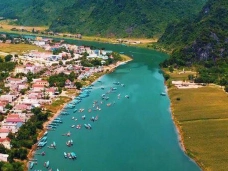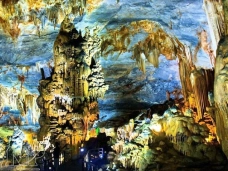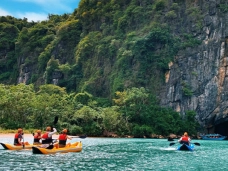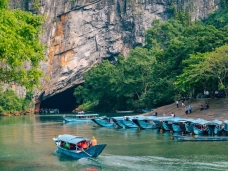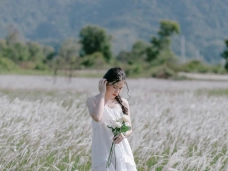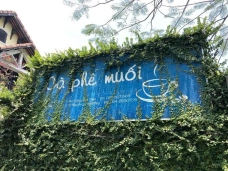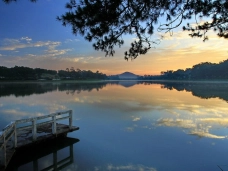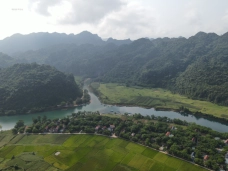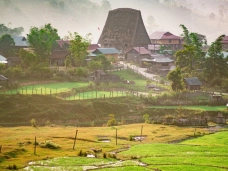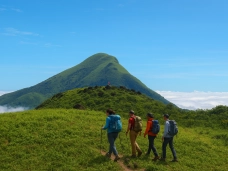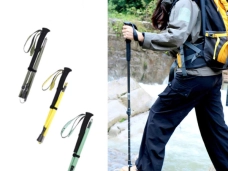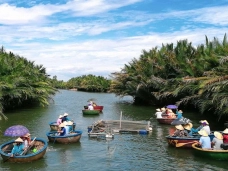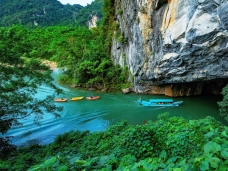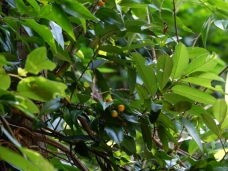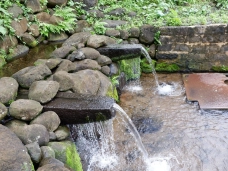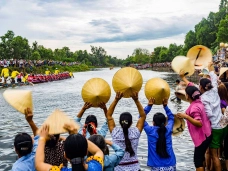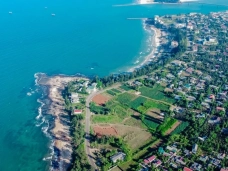Son Tra Awaits
31-07-2025 08:16
While browsing through ecological studies, I stumbled upon a research paper titled “Feeding Ecology of Red-Shanked Douc Langurs at Son Tra Nature Reserve, Da Nang, Vietnam”, published in the journal Primate Conservation in 2022.
One passage caught my attention:
“In 1819, the crew of a European ship that anchored in Da Nang shot more than 100 red-shanked douc langurs in just a single morning.”
This single line was a stark reminder that, over two centuries ago, this land was once home to thriving troops of doucs — a species now considered one of the most precious and endangered primates in the world.
I recalled my very first visit to Son Tra back in 2017, when I joined Dr. Nguyễn Anh Đức’s research team to assess the effectiveness of controlling the invasive white-flowered Mile-a-minute vine on the peninsula’s natural ecosystem.
This time, I have returned not as a researcher, but as a traveler — determined to explore and understand more deeply the essence of this one-of-a-kind peninsula.

Gateway to the “Green Lung”
Just about 10 kilometers northeast of downtown Da Nang, the Son Tra Peninsula stretches out like a lush emerald carpet along the shore. This is the only remaining old-growth forest nestled within a Vietnamese city. The moment I set foot at the base of the mountain, I could feel the cool, pure air seeping from the dense canopy above. It is no coincidence that Son Tra is known as the “green lung” of Da Nang — a natural shield that regulates the climate and breathes life into the entire city.
The winding Hoang Sa coastal road gradually led me deeper into the peninsula. In the distance, wisps of white cloud curled around the mountain peak, like a celestial gate beckoning travelers. Son Tra’s presence has been recorded in ancient chronicles for centuries. In Phu Bien Tap Luc, scholar Le Quy Don described Mount Son Tra (then called Hon Nghe) as a place where “a precious gem on the mountain shone down upon the sea at night… and celestial maidens often descended to bathe and play, hence the name Tien Sa Mountain.” Even Emperor Le Thanh Tong in the 15th century, during his southern campaign into Champa, paused at this very bay to compose poetry. These accounts reveal that Son Tra was not only a place of beauty but also a bustling gateway for international trade more than 600 years ago.

The Home of Nature
Our vehicle continued winding along steep, twisting roads flanked by deep green forest. Morning sunlight streamed through the leaves, and now and then a squirrel or a monkey darted across the road before disappearing into the dense undergrowth. Son Tra is blessed with an exceptionally precious tropical rainforest ecosystem. Studies show that its plant species make up 14% of Vietnam’s total flora, while migratory birds passing through account for 13.2% of the country’s total migratory bird species. Located at the climatic crossroads between the North and South, Son Tra’s biodiversity bears the distinct signatures of both regions.
Along the way, our guide pointed out a small brook trickling down from the mountain slope. The peninsula is home to around 20 streams, with Da Stream and Heo Stream being the two main freshwater sources for the coastal communities. Covering 4,400 hectares, Son Tra is dominated by evergreen tropical forest. According to GreenViet, by 1989 forest cover had declined to 67%, yet the ecosystem still retains an astonishing degree of wilderness.
Each season dresses Son Tra in a different palette: spring brings golden showers of blooming lim xet blossoms on the hillsides; in summer, the forest deepens to a rich green beneath the blazing sun; autumn tinges some foliage with warm reds and golds; and winter cloaks the mountains in mist, while migratory birds from the North fill the air with their calls — painting a vibrant, ever-changing canvas of life.
Venturing deeper into the forest, I was fortunate to spot a troop of red-shanked douc langurs leaping gracefully from branch to branch. Their coats are a living masterpiece: reddish-brown legs, snow-white arms, a golden-orange face, and a “scarf” of white fur draped around the neck. Endemic to Indochina, these primates are classified as Critically Endangered (CR) in both the Vietnam Red Data Book and the IUCN Red List. Son Tra is now home to the largest and healthiest population of red-shanked douc langurs in the world. In 2017, GreenViet estimated about 1,300 individuals; recent surveys show the number has grown to over 2,000 — representing the majority of the species remaining in the wild globally. The presence of infants in the group I encountered was a promising sign of thriving reproduction.
The peninsula is also a haven for other rare wildlife: serows, Truong Son muntjacs, peafowls, pheasants, and more. The nature reserve has recorded 1,679 species of flora and fauna, including 1,010 vascular plant species and 366 vertebrate species — 42 mammals, 162 birds, 55 reptiles, 22 amphibians, and 231 insects. Of these, 68 species (10 plant species and 58 animal species) are listed as threatened or endangered in the Vietnam Red Data Book and the IUCN Red List.

Through the Layers of Time
Leaving Da Stream behind, I paused by a rugged rocky slope where tiered cliff faces glistened under the morning sun. My guide pointed to the sedimentary layers and said, “Look closely — this is living proof that Son Tra once lay beneath the ocean millions of years ago.” I bent down for a closer look, tracing with my eyes the stacked shale strata — silent witnesses to an ancient, slow-moving process of sedimentation.
According to research by the Vietnam Institute of Geosciences and Mineral Resources, Son Tra Peninsula possesses a complex geological structure. It belongs to the ancient Kon Tum Massif, sitting on its northeastern edge and bordering the Han River depression. Its terrain is formed primarily from biotite granite intrusions dating back approximately 260–250 million years, during the Late Permian period at the end of the Paleozoic Era. In certain foothill and coastal areas, layers of Quaternary sediments — sand, gravel, and clay — still remain, evidence of powerful marine activity and erosion during the more recent Ice Age.
Son Tra’s slopes are dotted with giant granite blocks weathered into mushroom-like shapes known as tors — a distinctive feature of its landscape. Under the combined forces of daily temperature fluctuations and year-round humidity, these granite masses fractured vertically and horizontally, creating striking natural sculptures. Along the coastline, sheer cliffs such as “Da Ong Nghe” (The Elder’s Rock) and “Da Dau Voi” (Elephant Head Rock) bear the marks of ancient marine erosion intertwined with deep geological faults.
Satellite imagery and topographic maps reveal that Son Tra was once a solitary island offshore. During the Late Pleistocene, around 10,000–12,000 years ago, sea levels rose after the last Ice Age, shaping the present coastline. Sand carried from the Han and Cu De rivers gradually accumulated to form the sandy isthmus that now connects Son Tra to the mainland, transforming it from island to peninsula. This unique high-mountain terrain bordered by the sea on three sides has created an isolated microhabitat — earning Son Tra the title of an “ecological island on land,” where ancient geological heritage forms the very foundation for an exceptionally rich and rare ecosystem.
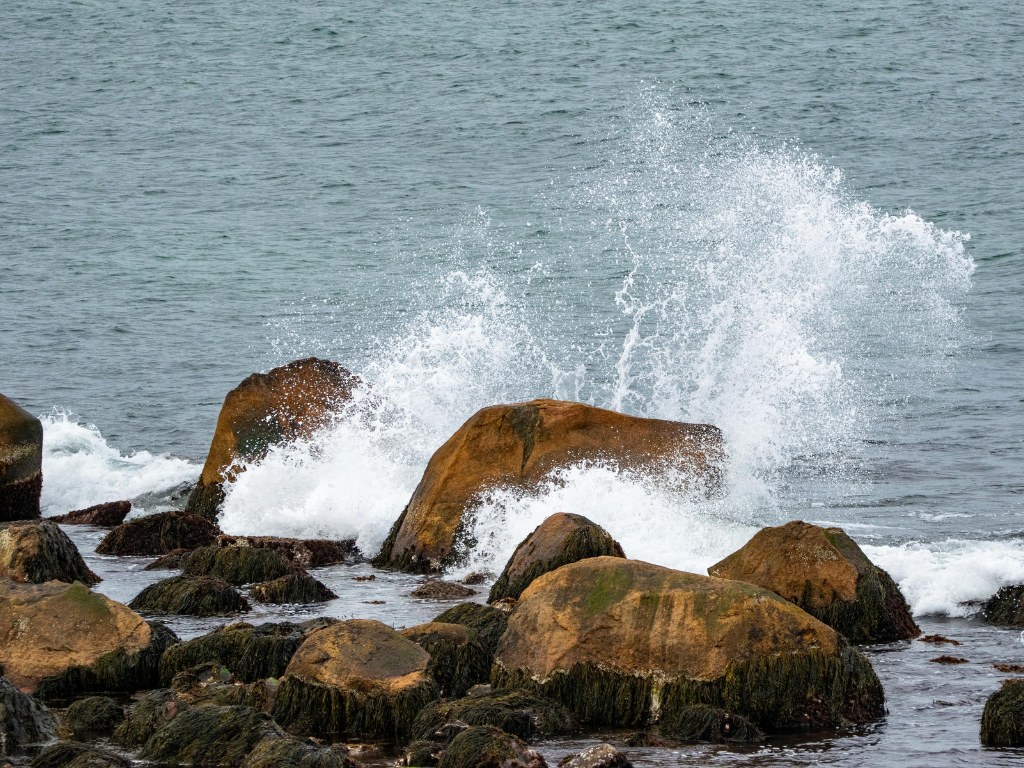
Traces of History
From the summit of Ban Co Peak, nearly 700 meters above sea level, Da Nang unfolds like a vast watercolor painting. For centuries, Son Tra has been regarded as the “Eye of Indochina.” During the Nguyen Dynasty, Emperor Minh Mang forbade foreign vessels from anchoring in Son Tra Bay for extended periods and ordered the construction of Vietnam’s most formidable coastal defenses: Tran Duong Outpost (1857) at the peak, and Phong Hai Fortress (1841) at the mountain’s base. On September 1, 1858, this very shoreline witnessed the first cannon shot fired by the French–Spanish alliance, marking the beginning of the colonial invasion of Vietnam.
In the American era, Son Tra became home to a strategic radar base known as “Monkey Mountain.” The remnants of artillery emplacements and old concrete platforms still line the road to the summit, silent witnesses to decades of military history.
Yet Son Tra is not only a fortress of war — it is a land woven with legends. The “Celestial Chessboard” atop the peak, where two immortals are said to have once played a never-ending game; Tien Sa Beach, where heavenly maidens bathed in the clear waters; and But Beach, with its sacred Buddha statue said to have drifted ashore — all are part of its mystical tapestry. Today, the Linh Ung Pagoda, crowned by a 67-meter statue of the Goddess of Mercy gazing over the sea, continues this spiritual legacy. Alongside it stand the Dong Dinh Museum, ancestral Nguyen Dynasty shrines, and countless cultural relics — forming a rich historical sediment no less profound than the peninsula’s natural wonders.

Keeping Son Tra Forever Green
Perhaps Son Tra remains intact today thanks to the love and determination of generations past and present. In 1977, the area was officially designated as a nature reserve. Forest rangers, alongside local communities, have tirelessly patrolled its trails, dismantling hundreds of animal traps. GreenViet has launched educational campaigns and organized douc langur–watching tours to raise public awareness. Projects that once threatened the forest have been met with strong opposition and forced to adjust or halt entirely.
To ensure Son Tra stays green for generations to come, it is essential to continue educating the youth to cherish nature, while developing responsible eco-tourism that allows visitors to experience its beauty without causing harm. The city should further integrate science into management — such as establishing wildfire monitoring systems and tracking wildlife populations. Linking Son Tra with nearby reserves like Hai Van and Bach Ma would create a continuous green corridor for animal migration.
Most importantly, all future development plans must undergo rigorous environmental impact assessments and seek expert consultation, ensuring that nature is never sacrificed for short-term economic gain — a principle once upheld by Emperor Minh Mang nearly two centuries ago.
A Farewell to Son Tra
Before leaving the peninsula, I turned for one last look at the endless green slopes stretching to the horizon. No poetic flourishes were needed — only a simple, sincere wish: that Son Tra will remain just as it is now — with its forests, streams, wildlife, and trees — so that when I return someday, I can once again breathe in this pure air and feel this rare, tranquil peace.
I recalled the words of an ecologist: “As long as the douc langurs remain, Son Tra will still be Son Tra.” It struck me that while life in the city, barely ten kilometers away, rushes on relentlessly, this place still holds on to its pristine calm. Perhaps the people of Da Nang may not always realize that each day they are breathing the fresh, life-giving air silently produced by the forests of Son Tra.
Tuệ Minh
Comments
Comments (Total 1)
Chad Mendes
12-08-2025
Related Articles
13-12-2025
Giải mã tên gọi Phong Nha – Kẻ Bàng
26-11-2025
Khe Sanh – A Journey into Memory
05-11-2025
8 Unmissable Instagram Spots in Da Lat
28-10-2025





